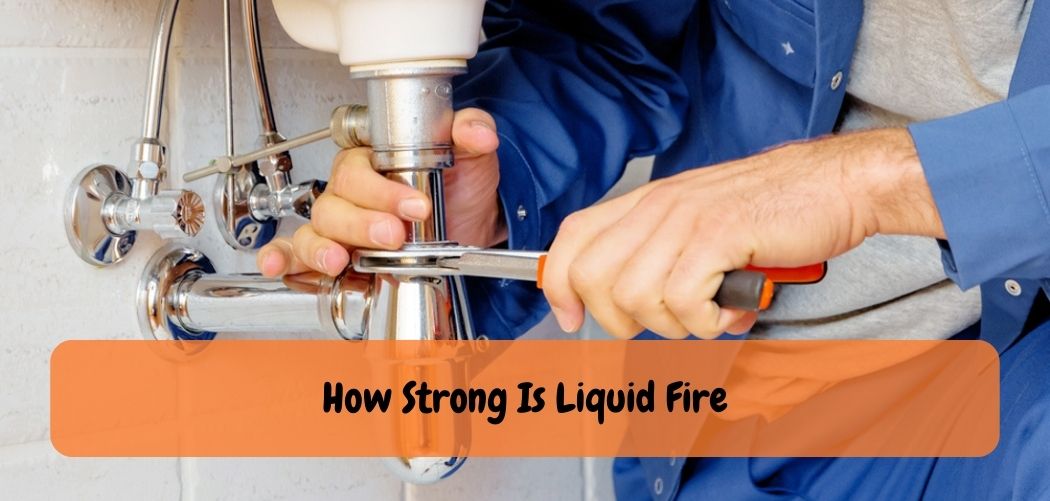Liquid fire is an extremely strong acid. It is one of the most powerful acids known to exist, capable of burning through even the toughest materials.
Throughout history, humankind’s fascination with fire has been both mesmerizing and terrifying. From ancient myths and legends to modern scientific advancements, the alluring dance of flames has captivated our imaginations.
Among the numerous manifestations of fire’s might, one of the most enigmatic is liquid fire. Mysterious and elusive, liquid fire possesses a unique and awe-inspiring strength that has puzzled scientists, alchemists, and storytellers alike.
Imagine a substance that can flow like water but possesses the ferocity of a blazing inferno. Liquid fire, also known as Greek Fire or Byzantine Fire in historical contexts, has been the subject of intrigue for centuries. The secrets of its creation.
The true extent of its power have been shrouded in mystery, passed down through generations like guarded treasures. Its use in ancient battles could turn the tides of war, striking fear into the hearts of enemies and awe in the minds of those who witnessed its might.
Understanding Liquid Fire: Definition And Characteristics
Liquid fire is a highly flammable substance used for a variety of industrial purposes. It is a mixture of chemicals that produce a potent, colorless liquid with strong burning capabilities. Liquid fire has a unique chemical composition that gives it its intense burning properties.
It is mainly composed of hydrocarbons, which are molecules made up of hydrogen and carbon atoms. This composition makes it highly combustible and explosive. In terms of physical characteristics, liquid fire is odorless and has a low viscosity.
Compared to other flammable liquids, liquid fire is more potent and more dangerous to handle.Its strong chemical properties make it a popular choice for industrial use, but it requires careful handling to avoid potential accidents.
The Guide: How Strong Is Liquid Fire
Liquid fire, a captivating and fearsome substance, has intrigued humanity for centuries. Known by various names like Greek Fire, Byzantine Fire, and Napalm in modern times, this fiery concoction possesses a unique strength that sets it apart from ordinary flames.
Throughout history, its devastating power has been harnessed as a potent weapon of war, leaving opponents in awe and terror. In this informative guide, we embark on a journey to understand the true strength of liquid fire – its composition, historical significance, and potential applications in modern times.
1. The Composition of Liquid Fire:
Liquid fire is a highly specialized incendiary weapon that involves a potent combination of ingredients. Historically, the precise formula has been zealously guarded and passed down through generations. The primary components typically include flammable substances such as petroleum.
Pitch, and resin, mixed with secret additives to enhance its adhesive properties and sustain combustion. The resulting concoction creates a sticky, gelatinous substance that adheres to surfaces and continues burning even when exposed to water.
2. Historical Significance and Use:
Liquid fire has a rich history dating back to antiquity. It gained prominence during the Byzantine Empire (7th to 12th centuries) and was a closely guarded military secret. Its deployment in naval warfare proved especially effective, as it could be launched in pots or via specialized flamethrowers.
This unique weapon could wreak havoc on enemy ships, creating chaos and instilling fear among adversaries. The use of liquid fire in historical battles played a pivotal role in shaping the outcomes of conflicts and solidifying its reputation as a formidable force on the battlefield.
3. Understanding the Strength:
The strength of liquid fire lies not only in its ability to burn fiercely but also in its capacity to cling to surfaces, making it incredibly difficult to extinguish. When ignited, it produces intense heat.
Causing immense destruction and generating a terrifying psychological impact on opponents. Its tenacious nature enables it to burn effectively on water, making it a potent naval weapon and a game-changer in maritime warfare.
4. Modern Applications:
While the use of liquid fire as a weapon of war has diminished in modern times, its legacy lives on in certain military applications and firefighting techniques. Modern variants of incendiary weapons, like napalm, draw inspiration from the principles of liquid fire.
Additionally, researchers are exploring ways to adapt the concept of liquid fire for controlled burns in controlled environments, such as land clearing for agricultural purposes or controlled burns to prevent wildfires from spreading uncontrollably.
5. Ethical and Environmental Concerns:
Despite its historical significance and potential applications, liquid fire raises ethical and environmental concerns. Its devastating effects on both human life and ecosystems have led to international bans on the use of certain incendiary weapons.
Including napalm, in warfare. The potential for unintended collateral damage and the long-lasting environmental impact of such weapons remain critical issues that must be considered when exploring the strength and utility of liquid fire.
Liquid Fire: The Power Behind The Flame
Liquid fire is an incredibly powerful substance, capable of generating staggering levels of heat. The key to its effectiveness lies in the chemical reactions that occur when it ignites. The heat output of liquid fire is immense, making it a popular choice in many industrial settings where high temperatures are required.
However, its ignition temperature is also relatively low, meaning that it can be dangerous to handle if not used correctly. Potential hazards associated with liquid fire include the risk of burns, explosions, and toxic fumes.
As such, it is important to take appropriate safety precautions when working with this substance. Overall, though, liquid fire is an incredibly useful and versatile tool, with many applications in a wide variety of industries.
Frequently Asked Questions Of How Strong Is Liquid Fire?
Is Liquid Fire Dangerous To Handle?
Yes, it is highly caustic and can cause severe burns if it comes into contact with your skin.
What Happens When You Pour Liquid Fire On Paper?
It will burn the paper quickly and can even create a small fire.
Can Liquid Fire Dissolve Metals?
Yes, it can dissolve soft metals such as aluminum and zinc.
How Do You Safely Dispose Of Liquid Fire?
You should contact your local hazardous waste disposal facility for proper disposal instructions.
What Are Some Common Uses Of Liquid Fire?
Liquid fire is commonly used as a drain cleaner and can also be used to control fires in certain situations.
Conclusion
Liquid fire is a powerful solution that can contribute significantly to our daily lives. It is capable of achieving many purposes, from heating to burning things. It can be helpful in cleaning drains and pipes, removing stains, and melting snow and ice.
The strength of liquid fire highlights its importance in various industries, like construction and manufacturing as a reliable tool. However, the potential risks associated with using this chemical cannot be overlooked. Safety precautions and regulations must be taken when handling, storing, and disposing of liquid fire to prevent environmental harm and health hazards.
Regardless, its versatility and effectiveness have made it a sought-after product in many marketplaces. By understanding the potency of liquid fire, we can use it to our advantage while still practicing safety and caution. Ultimately, liquid fire has proven to be an essential and valuable solution in many fields, and with proper management, its potential can continue to be fully realized.










